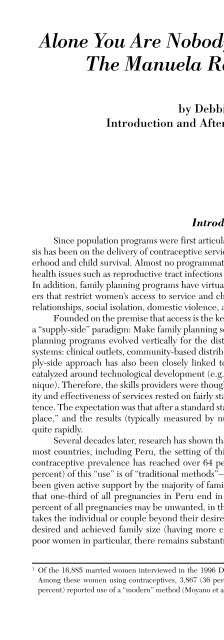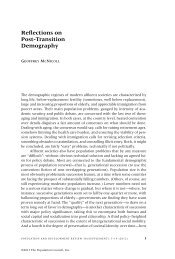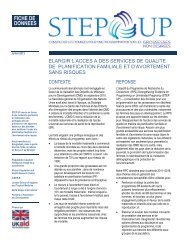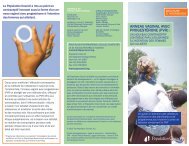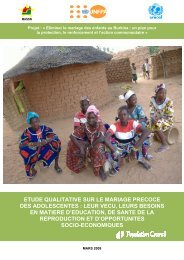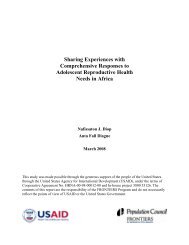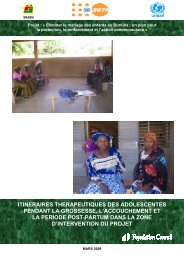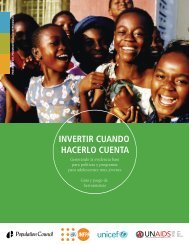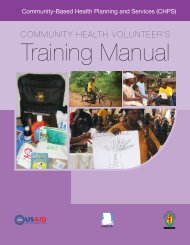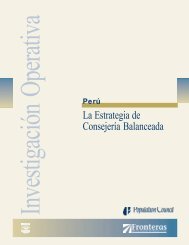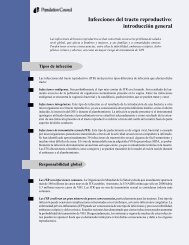QCQ# 10 Alone You are Nobody, Together We Float: The Manuela ...
QCQ# 10 Alone You are Nobody, Together We Float: The Manuela ...
QCQ# 10 Alone You are Nobody, Together We Float: The Manuela ...
You also want an ePaper? Increase the reach of your titles
YUMPU automatically turns print PDFs into web optimized ePapers that Google loves.
<strong>Alone</strong> <strong>You</strong> Are <strong>Nobody</strong>, <strong>Together</strong> <strong>We</strong> <strong>Float</strong>:<br />
<strong>The</strong> <strong>Manuela</strong> Ramos Movement<br />
by Debbie Rogow<br />
Introduction and Afterword by Judith Bruce<br />
Introduction<br />
Since population programs were first articulated in the late 1960s and early 1970s, the emphasis<br />
has been on the delivery of contraceptive services, with some lesser attention given to safe motherhood<br />
and child survival. Almost no programmatic attention has been paid to related reproductive<br />
health issues such as reproductive tract infections (RTIs), sexual violence, and unwanted pregnancy.<br />
In addition, family planning programs have virtually ignored the substantial underlying social barriers<br />
that restrict women’s access to service and choice, such as limited negotiating power in sexual<br />
relationships, social isolation, domestic violence, and lack of cash resources.<br />
Founded on the premise that access is the key issue, traditional population programs embraced<br />
a “supply-side” paradigm: Make family planning services available and people will use them. Family<br />
planning programs evolved vertically for the distribution of contraceptives through three parallel<br />
systems: clinical outlets, community-based distributors, and commercial/social marketing. This supply-side<br />
approach has also been closely linked to technology, with new program directions often<br />
catalyzed around technological development (e.g., the sudden availability of a new vasectomy technique).<br />
<strong>The</strong>refore, the skills providers were thought to need were mainly clinical, and issues of quality<br />
and effectiveness of services rested on fairly standard but limited parameters of provider competence.<br />
<strong>The</strong> expectation was that after a standard start-up phase of several years, services would be “in<br />
place,” and the results (typically measured by number of contraceptives dispensed) would come<br />
quite rapidly.<br />
Several decades later, research has shown that the success of this approach has been uneven in<br />
most countries, including Peru, the setting of this issue of Quality/Calidad/Qualité. For although<br />
contraceptive prevalence has reached over 64 percent among married women in Peru, much (36<br />
percent) of this “use” is of “traditional methods”—such as rhythm and withdrawal—which have not<br />
been given active support by the majority of family planning programs. 1 In addition, it is estimated<br />
that one-third of all pregnancies in Peru end in abortion (WHO 1998, p. 56). Further, up to 60<br />
percent of all pregnancies may be unwanted, in the sense that the timing is wrong or the pregnancy<br />
takes the individual or couple beyond their desired family size, indicating a significant gap between<br />
desired and achieved family size (having more children than originally envisioned). Thus, among<br />
poor women in particular, there remains substantial unmet need for family planning services.<br />
1 Of the 16,885 married women interviewed in the 1996 DHS survey, <strong>10</strong>,840 (64 percent) reported contraceptive use.<br />
Among these women using contraceptives, 3,867 (36 percent) reported use of a “traditional” method and 6,974 (64<br />
percent) reported use of a “modern” method (Moyano et al. 1997, p. 63).<br />
1


